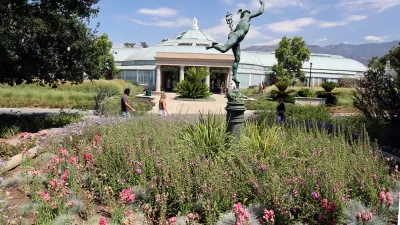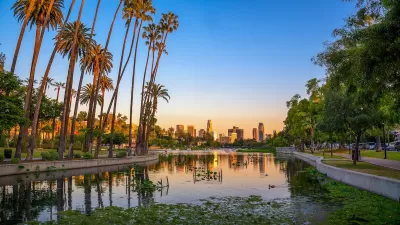The L.A. County Department of Parks and Recreation is hosting over 60 public meetings in September to connect with the public and gather input to inform decision-making and resource allocation.

Throughout the month of September, the Los Angeles County Department of Parks and Recreation (DPR) will hold community meetings at 56 local parks and eight nature centers across the county. These meetings offer the public the opportunity to meet park staff and hear about the programs, projects, and events at parks and nature centers. Community members will also be able to share suggestions and priorities for their local park and nature center. The input gathered will help shape DPR's budget for the new fiscal year.
Earlier this year, DPR released its 2023-2028 Strategic Plan, which was created to guide the agency's direction, decision-making, and growth for the next five years. The Plan sets forth a course of action for both DPR's internal improvements and external work across L.A. County. It also establishes benchmarks to track progress and ensure that DPR is meeting the stated goals. The Plan was developed with extensive public and staff engagement and based on an anti-racism, diversity, and inclusion-focused framework. It affirms the DPR's commitment to prioritize funding and staffing for programming and park access initiatives that redress social, racial, gender-based, and environmental injustice in L.A. County, especially in the most vulnerable communities.
As part of the Strategic Plan, DPR committed to strengthening communication and engagement with the communities they serve. Hosting annual public meetings is a key part of this commitment and reflects that the Strategic Plan is being implemented.
FULL STORY: Annual Community Meetings

Study: Maui’s Plan to Convert Vacation Rentals to Long-Term Housing Could Cause Nearly $1 Billion Economic Loss
The plan would reduce visitor accommodation by 25,% resulting in 1,900 jobs lost.

North Texas Transit Leaders Tout Benefits of TOD for Growing Region
At a summit focused on transit-oriented development, policymakers discussed how North Texas’ expanded light rail system can serve as a tool for economic growth.

Why Should We Subsidize Public Transportation?
Many public transit agencies face financial stress due to rising costs, declining fare revenue, and declining subsidies. Transit advocates must provide a strong business case for increasing public transit funding.

Alabama: Trump Terminates Settlements for Black Communities Harmed By Raw Sewage
Trump deemed the landmark civil rights agreement “illegal DEI and environmental justice policy.”

Dear Tesla Driver: “It’s not You, It’s Him.”
Amidst a booming bumper sticker industry, one writer offers solace to those asking, “Does this car make me look fascist?”

A Visual Celebration of Manhattan’s Chinatown Elder Community, Through Food
Lanterns, cafeteria trays, and community connection take center stage in this stunning photo essay.
Urban Design for Planners 1: Software Tools
This six-course series explores essential urban design concepts using open source software and equips planners with the tools they need to participate fully in the urban design process.
Planning for Universal Design
Learn the tools for implementing Universal Design in planning regulations.
City of Santa Clarita
Ascent Environmental
Institute for Housing and Urban Development Studies (IHS)
City of Grandview
Harvard GSD Executive Education
Toledo-Lucas County Plan Commissions
Salt Lake City
NYU Wagner Graduate School of Public Service





























